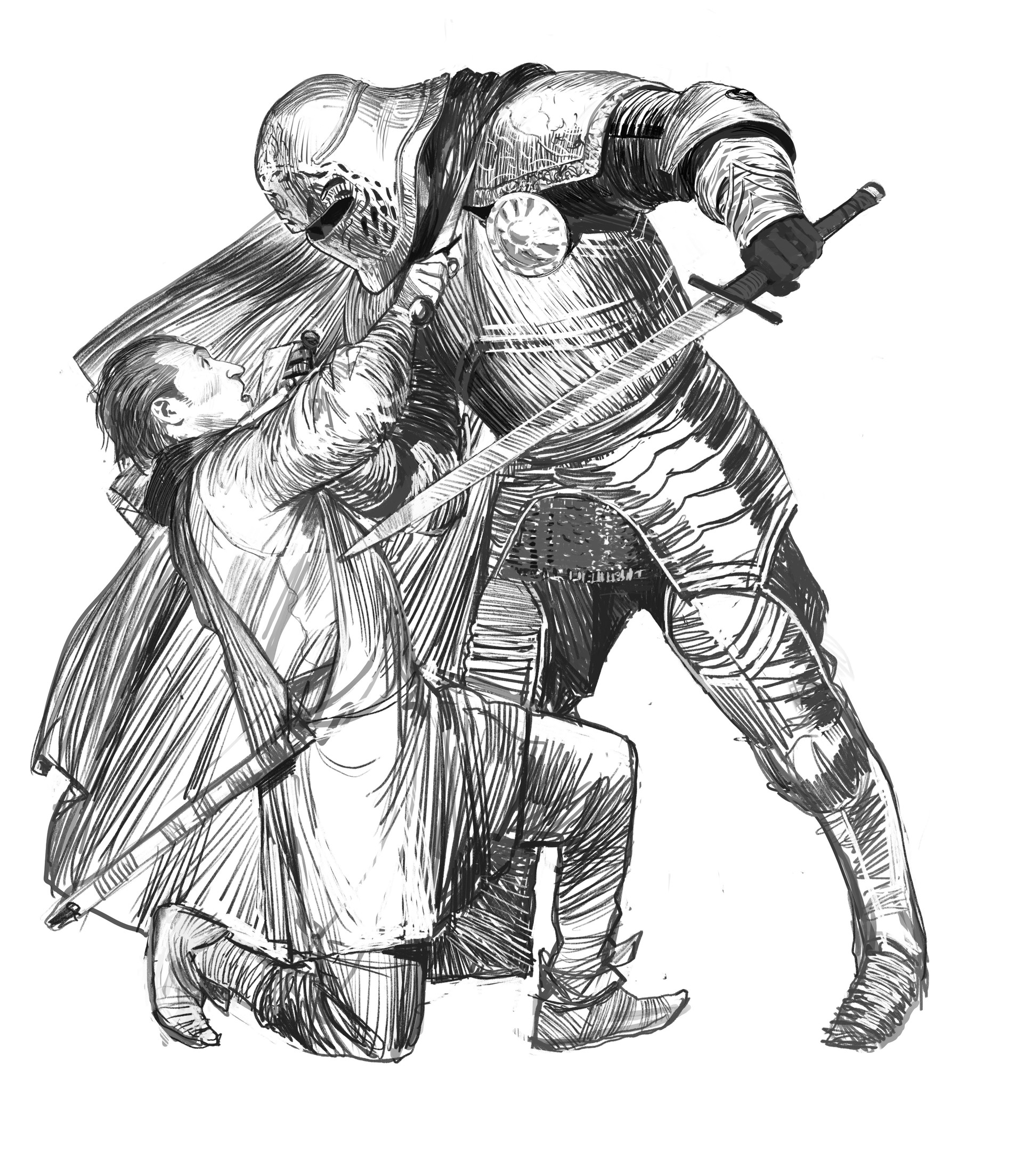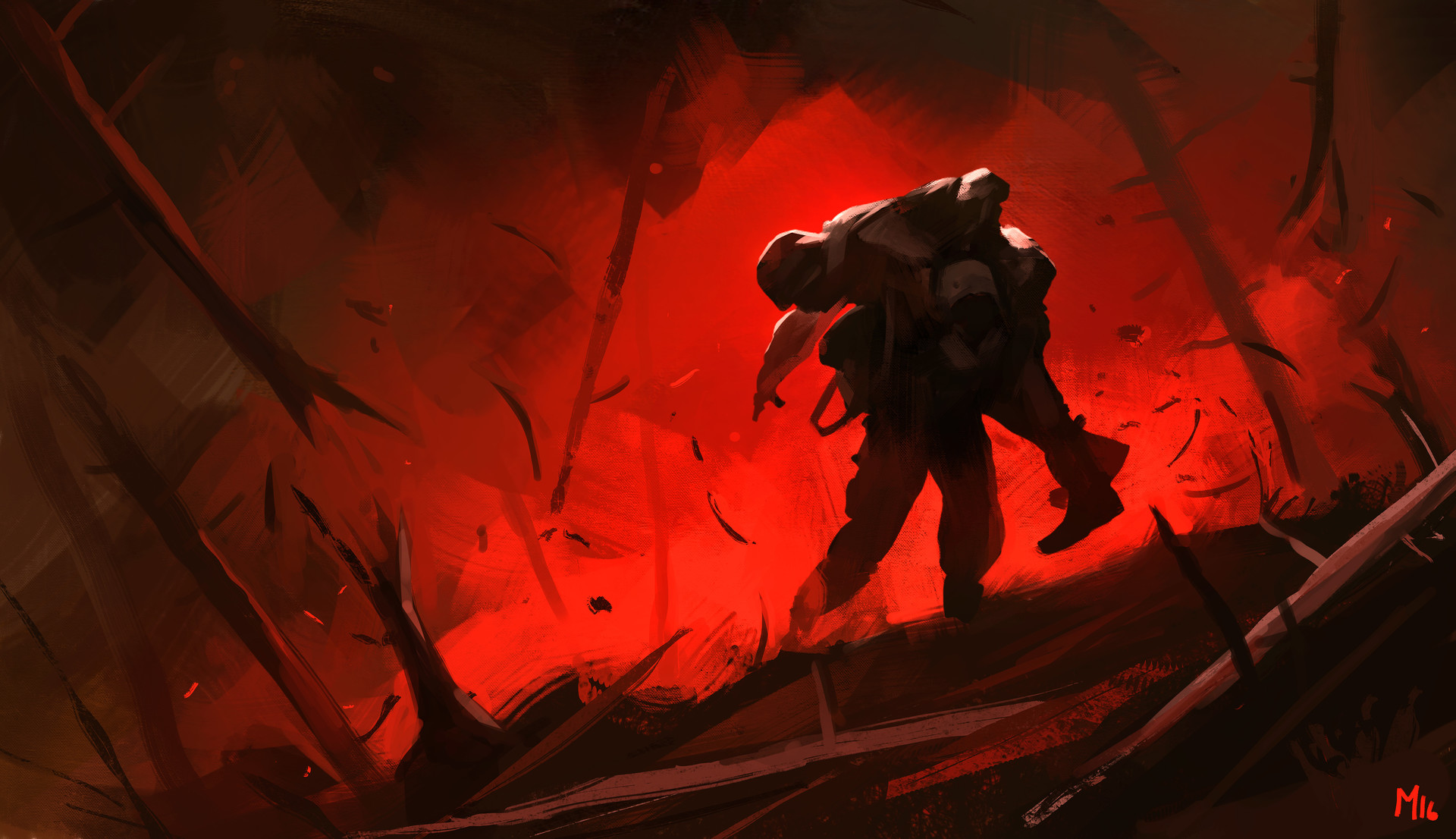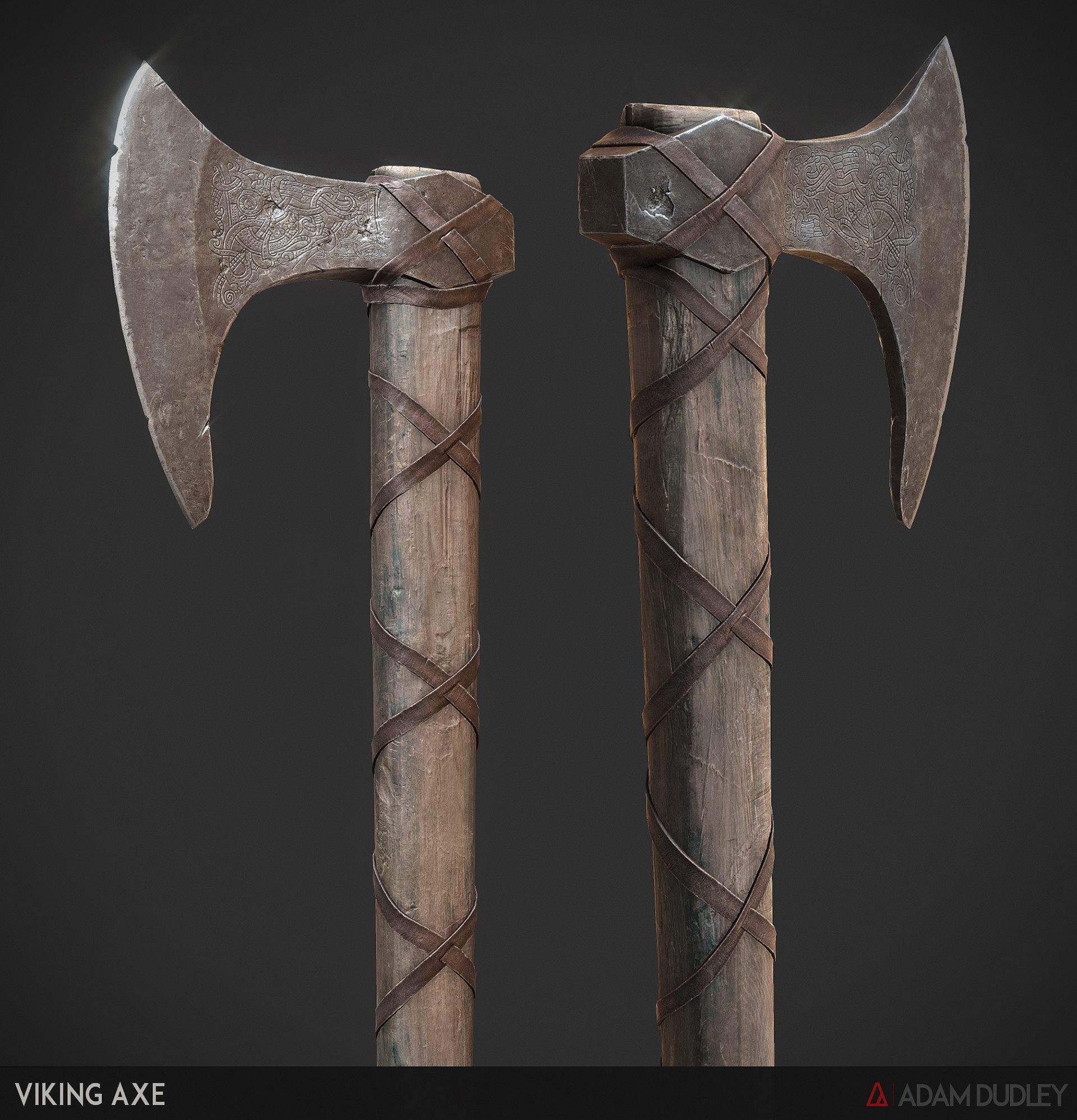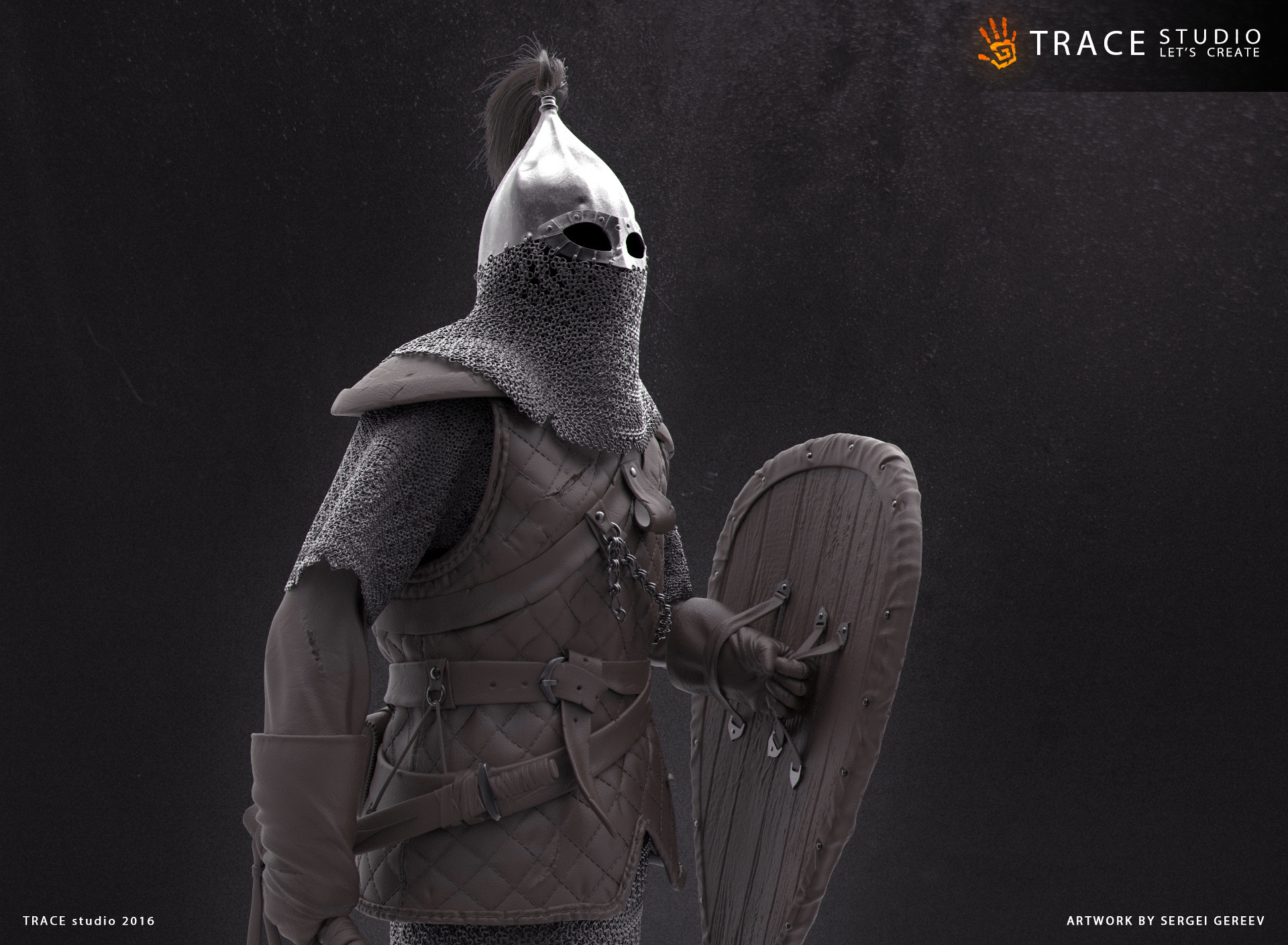 |
| Battle by Faraz Shanyar |
Vigor is the measure of a character's ability to keep on fighting, generally avoid major injury be it due to physical stamina, morale, or even luck. When damage has reduced a character's vigor to zero, that character is worn out, and the next damage they take will cause a Wound. When characters rest for an hour long meal break and eat at least one ration, their vigor is restored to full. Likewise when they sleep for eight hours, and they can drink alcohol to restore 1d6 vigor in a round.
A wounded character cannot regain vigor until they've healed, which takes one week per wound. If a wounded character takes damage, they must roll 1d6. If the result is higher than their number of wounds, they survive and take a wound. If the result is equal to or lower than their number of wounds, they become fatally wounded. A fatally wounded character can die right away, or within the week if the player wishes, but the character won't be able to continue adventuring consistently while dying.
 |
| Carrying the Wounded by Dominik Mayer |
Each round of combat takes ten seconds, and melee combatants have three stances to choose from; fast, parry, and feint. Much like rock paper scissors, fast stance is beaten by parry stance, parry is beaten by feint, and feint stance is beaten by fast stance. If your stance is beaten by your opponent's, you take full damage. If your stance matches your opponent's, each take 1 damage plus attack bonuses. A character can only use feint stance with a weapon they are proficient with, and can use parry stance with any weapon.
Animals or creatures of similar mental capacity can either pounce or dig in, which are analogous to a fast stance or parry stance respectively. An animal trained specifically in combat can feint, as can creatures with human-level intelligence.
There are four categories of melee weapons: light weapons, mass weapons, balanced weapons, and reach weapons. Light weapons are generally small, one-handed ones like daggers, knuckles, or a small cudgel. A mass weapon could be a mace, hammer, or axe which can be wielded in one hand. Balanced weapons include swords, spears, and other weapons that are generally longer but can be used either one handed or two handed, and have a more even balance along their length. Reach weapons include greatswords, poleaxes, and most other polearms, and can only be used with both hands.
| attack | defense | armor piercing |
Light weapon: | +1 | +1 | +1 |
Mass weapon: | +1 | +1 | +2 |
Balanced weapon: | +2 | +2 | +1 |
Reach weapon: | +2 | +2 | +2 |
 |
| Viking Axe by Adam Dudley |
Light weapon damage uses the lower result of 2d6, one handed mass or balanced weapons deal 1d6, and two handed weapons deal the higher result of 2d6. While wielding a mass or balanced weapon, a light weapon in the offhand grants +1 attack and armor piercing. With a shield, the character can choose to block instead of attacking, increasing their defense by the lower result of 2d6 with a small shield, or 1d6 with a large shield.
Ranged attacks use the a skill check each round. For thrown weapons such as knives, darts, or a sling, the launcher skill is rolled. For bows, the archer skill is used, and for crossbows or firearms the shooter skill. For a particularly difficult shot, such as trying to hit someone hiding in underbrush or out of range, the skill check is twice as hard.
A successful unarmed attack deals one damage plus attack bonus. With special unarmed training, an unarmed character can enter parry stance against unarmed enemies. With unarmed mastery, an unarmed character can enter parry stance against armed opponents.
 |
| Xiu Yin Chen by Mario Wibisono |
Armor increases defense, +1 for gambeson or other light armor, +2 for chain or other medium armor, and +3 for plate or other heavy armor. If the character wears heavy armor all day, they become strained, and heavy armor takes one minute to put on with help.
 |
| Varangian by Sergei Gereev |
There are five movement choices in a round. Closing distance, creating distance, maintaining distance, racing to a target, and holding ground. When making one of these actions against a foe, such as racing against someone, maintaining distance against a fleeing opponent, or holding ground against someone trying to get past your character, each roll 1d20 and add their speed bonuses, whoever rolls higher wins.
These rules may seem a bit unfocused, but in general it's designed to focus on melee combat and create a reasonably realistic, tactical, and streamlined experience. Lots of this was inspired by https://spellsandsteel.blogspot.com/ so check out that blog if you want some really interesting real-world data related to weapons, travel, equipment, and other information relevant to a medieval fantasy type game. Sorry I missed a post, for those that noticed.
No comments:
Post a Comment